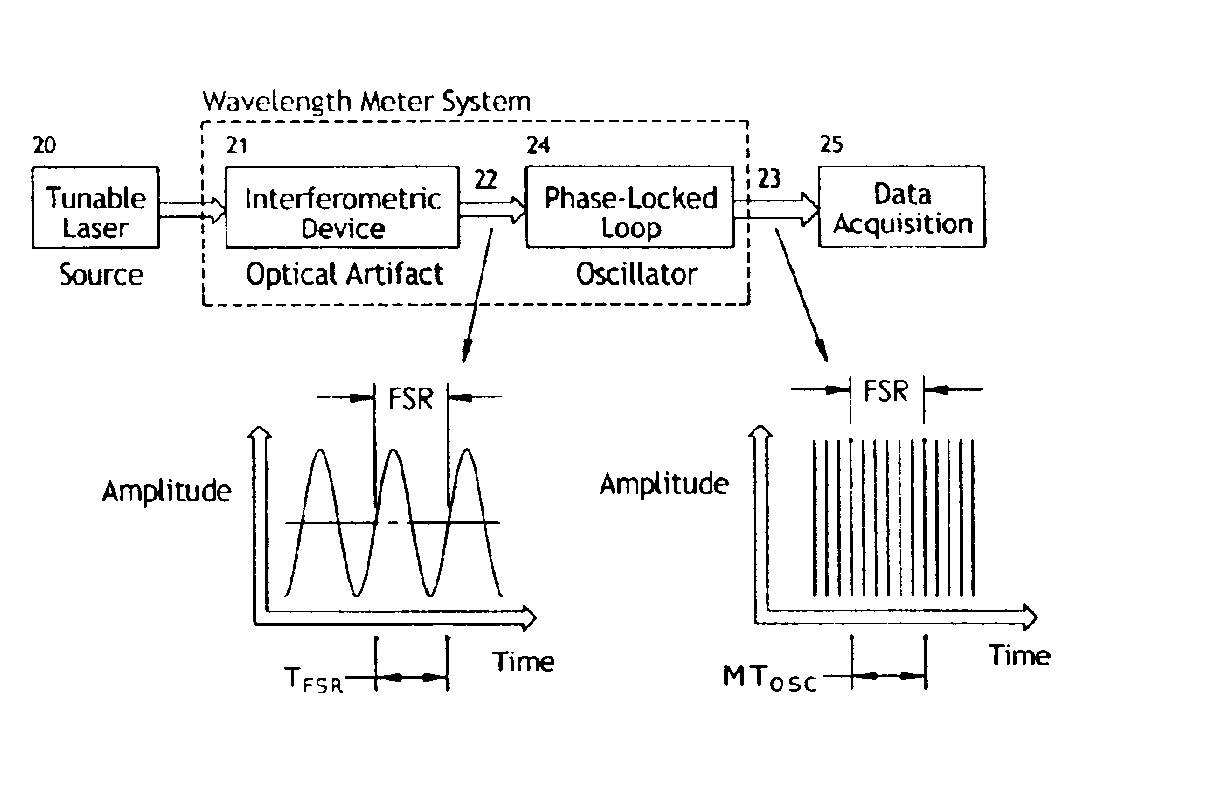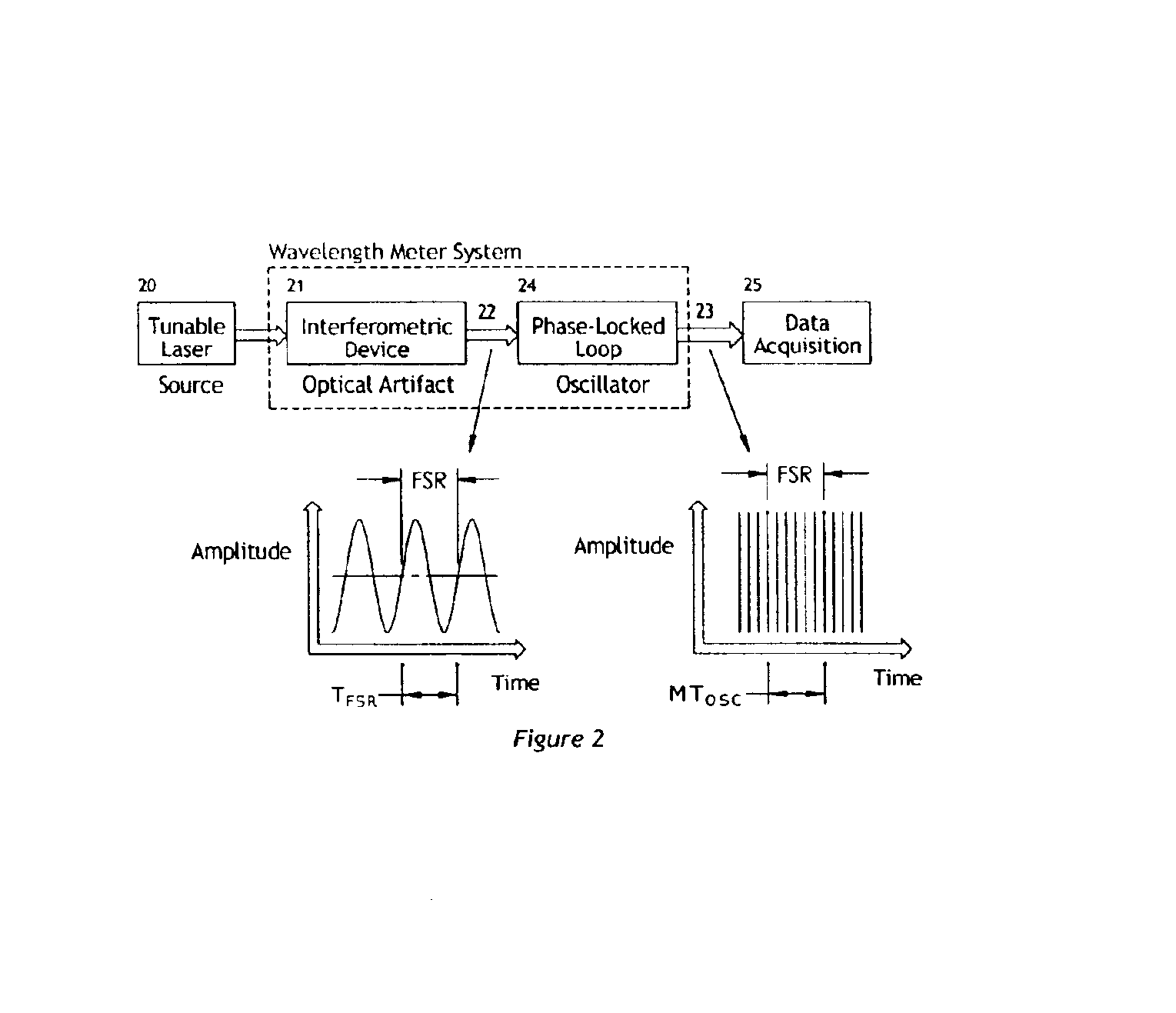Optical frequency sweep control and readout by using a phase lock
a phase lock and optical frequency technology, applied in the direction of optical apparatus testing, optical radiation measurement, instruments, etc., can solve the problems of excessively limited operational wavelength range, inconvenient operation, and inability to characterize optical networking components,
- Summary
- Abstract
- Description
- Claims
- Application Information
AI Technical Summary
Benefits of technology
Problems solved by technology
Method used
Image
Examples
Embodiment Construction
errors for each fringe of the optical artifact are determined.
[0033]FIG. 10 illustrates an embodiment in which the laser light is free-space coupled to the wavelength meter system.
[0034]FIG. 11 shows typical signals from some of the components shown in FIG. 10.
[0035]FIG. 12 illustrates a preferred embodiment in which the laser light is fiber-coupled to the wavelength meter system.
[0036]FIG. 13 details the auto-balancing level detection scheme used for detecting power-normalized level crossings of the optical artifact.
[0037]FIG. 14 shows the scheme for controlling the optical frequency scan rate of a laser by feedback of the phase difference between a reference oscillator signal and an optical artifact signal.
[0038]FIG. 15 illustrates an embodiment for feedback control of the optical frequency scan rate of a laser by using free-space coupling of the laser to the wavelength control system.
[0039]FIG. 16(a) depicts an embodiment of an optical spectrum analyzer device.
[0040]FIG. 16(b) sh...
PUM
 Login to View More
Login to View More Abstract
Description
Claims
Application Information
 Login to View More
Login to View More - R&D
- Intellectual Property
- Life Sciences
- Materials
- Tech Scout
- Unparalleled Data Quality
- Higher Quality Content
- 60% Fewer Hallucinations
Browse by: Latest US Patents, China's latest patents, Technical Efficacy Thesaurus, Application Domain, Technology Topic, Popular Technical Reports.
© 2025 PatSnap. All rights reserved.Legal|Privacy policy|Modern Slavery Act Transparency Statement|Sitemap|About US| Contact US: help@patsnap.com



